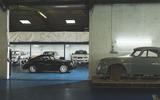Neil Yates, one of the UK’s foremost niche vehicle engineers, has launched an affordable and highly flexible EV chassis system that, he believes, can play a vital role in guiding this country’s plethora of low-volume vehicle makers through the coming electrification revolution.
A consultant on the Ariel Hipercar project, Yates believes niche manufacturers must start adapting to forthcoming 2030 electrification demands now – or risk being left with stocks of unsaleable vehicles and no clear way of updating them.
The new chassis design, called PACES, is adaptable to almost all kinds of low- to medium-volume vehicle manufacture, from tiny Caterham-style roadsters to large commercial vehicles – hence the name, which stands for ‘Passenger And Commercial EV Skateboard’.
A PACES chassis is configurable in almost any size and format – with front-, rear- or four-wheel drive systems that use between one and four motors mounted ahead of, behind or around the occupants and load.
“Well before the end of this decade,” Yates said, “lowvolume manufacturers will need to know they can build new products for a new market, using new technologies and a whole new supplier group. Almost nothing, except perhaps for the exterior shape of some of the more traditional vehicles, will be the same. We’ve created PACES to provide an answer to that problem.”
On casual inspection, Yates’s chassis looks little different from other aluminiumbased EV platforms carrying batteries between the two axles, beneath the cabin. But PACES is very different, the inventor explains, because it avoids most of the complexities of others and is thus able to be made affordably in low to medium volume – dozens to hundreds. Yates has already established a blue-chip supplier group capable of dealing in the unusual numbers anticipated.















Join the debate
Add your comment
A step in the right direction, but illustrates just how far we still need to travel re power, weight and cost.
im sure there are better cars for 75 grand